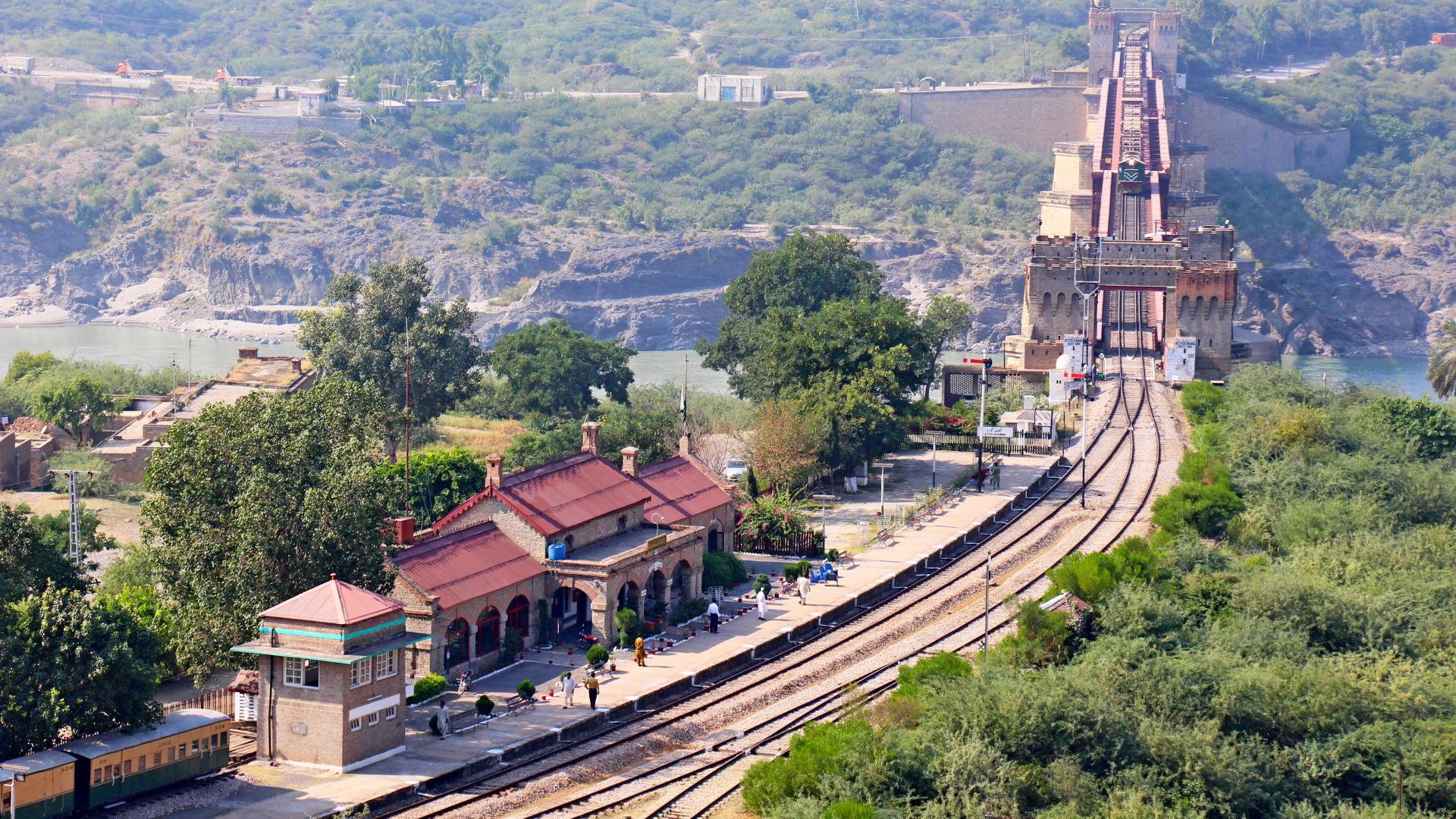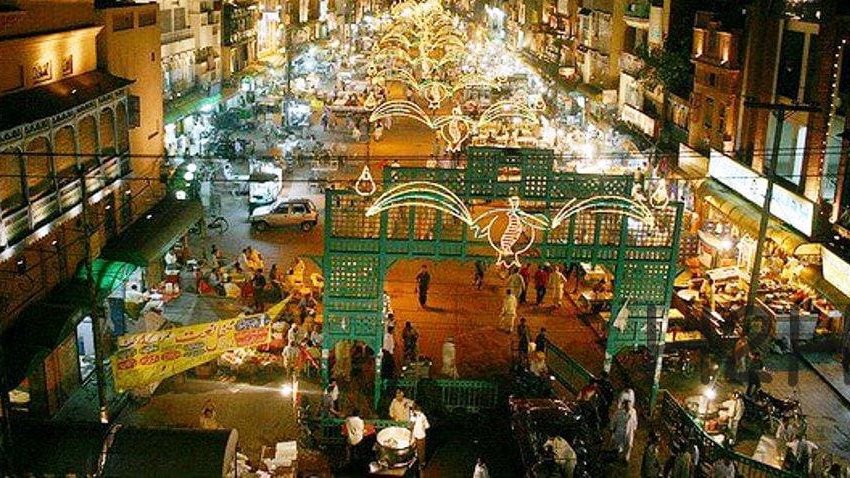Tourist Attractions In Pakistan
The Shivala Teja Singh temple, situated in Sialkot, Pakistan, is a historically significant Hindu temple dedicated to Lord Shiva. Constructed by Sardar Teja Singh, the temple's history is marked by periods of closure, particularly following the 1947 partition, and instances of damage. However, recent efforts by the Pakistani government, including renovations and its reopening in 2019, have revitalized the temple. Now under the care of the Pakistan Hindu Council, it serves as a vital religious site for Hindu pilgrims and stands as a testament to the region's diverse cultural and religious heritage.
Attock Bridge, also known as the Old Attock Bridge, is a historic railway and road bridge over the Indus River, connecting Punjab and Khyber Pakhtunkhwa in Pakistan. Built in 1883 during British rule, it was a crucial part of the Grand Trunk Road and played a strategic role in military and trade routes. The bridge features a unique double-deck design, allowing both railway and road traffic. Over time, a new bridge was constructed nearby for modern transportation, but the original Attock Bridge remains an important historical landmark.
The Badshahi Masjid, located in Lahore, Pakistan, is one of the largest and most iconic mosques in the world. Built in 1673 by Mughal Emperor Aurangzeb, it showcases magnificent Mughal architecture with grand red sandstone walls, intricate marble inlays, and towering minarets. The mosque can accommodate over 100,000 worshippers, making it a significant religious and historical landmark. Situated near the Lahore Fort, it remains a symbol of Pakistan's rich cultural and architectural heritage.
Lahore Fort, also known as Shahi Qila, is a UNESCO World Heritage Site located in the Walled City of Lahore, Punjab. Built and expanded by various Mughal emperors, it showcases stunning architecture, including Sheesh Mahal, Alamgiri Gate, Diwan-e-Aam, and Naulakha Pavilion. The fort stands as a symbol of Mughal grandeur and is a major historical and tourist attraction, situated next to Badshahi Mosque.
Noor Mahal, built in 1872 by Nawab Sadiq Muhammad Khan IV in Bahawalpur, is a stunning blend of Italian and Indo-Saracenic architecture. Originally intended as a royal residence, it later served official purposes and is now a heritage site managed by the Pakistan Army. The palace boasts grand halls, intricate artwork, and lush gardens, reflecting the opulence of the Nawabs. Its illuminated night view adds to its charm, making it a popular tourist attraction and museum showcasing historical artifacts and royal furniture.
Shah Rukn-e-Alam is a magnificent Sufi shrine located in Multan, Punjab. Built in the 14th century, it serves as the final resting place of the revered Sufi saint Hazrat Shah Rukn-ud-Din Abul Fateh. The tomb is an architectural masterpiece of Indo-Islamic design, featuring red brickwork and intricate blue tile decorations. It attracts thousands of devotees and tourists, symbolizing spiritual heritage and cultural significance in Pakistan.
Rohtas Fort, a UNESCO World Heritage Site, is a 16th-century military fortress located near Jhelum, Punjab, Pakistan. Built by Sher Shah Suri between 1541 and 1548, the fort was designed to prevent the return of the Mughal emperor Humayun and to control the rebellious local tribes. Spanning 4 km in circumference, it features massive stone walls, 12 gates, bastions, and strategic defensive structures. Rohtas Fort is known for its grand architecture, blending Afghan and South Asian styles, and remains one of the finest examples of military fortifications in the subcontinent. Today, it serves as a major historical and tourist attraction, offering visitors a glimpse into Pakistan’s rich heritage.
Anarkali Bazaar, named after the legendary courtesan Anarkali, is one of Lahore’s oldest markets, dating back to the Mughal era, located in the heart of the Walled City. Spanning Old Anarkali (traditional goods, spices) and New Anarkali (modern shops, electronics), it offers a vibrant mix of shopping, street food, and cultural immersion. Known for its colonial-era architecture and bustling lanes, it attracts thousands for its handicrafts, clothing, and Punjabi cuisine like nihari and gol gappay. Despite challenges like overcrowding and limited parking, its proximity to Lahore Fort and Badshahi Mosque, along with its historical charm, makes it a must-visit cultural hub.
Gurdwara Janam Asthan, also known as Gurdwara Nankana Sahib, is one of the holiest sites in Sikhism, located in Nankana Sahib, Punjab, Pakistan. It marks the birthplace of Guru Nanak Dev Ji, the founder of Sikhism, born on April 15, 1469. This revered shrine, part of an ensemble of nine gurdwaras in the city, attracts thousands of Sikh pilgrims (yatris) and tourists worldwide for its spiritual significance and historical legacy. The gurdwara complex, with its majestic architecture, serene sarovar (sacred pond), and rich history, offers a profound experience of faith, equality, and community.
Gurdwara Darbar Sahib, also known as Kartarpur Sahib, is one of the holiest Sikh pilgrimage sites, located in Kartarpur, Narowal District, Punjab, Pakistan. It marks the place where Guru Nanak Dev Ji, the founder of Sikhism, spent the last 18 years of his life and passed away in 1539. Established by Guru Nanak, this gurdwara is revered for its spiritual significance and its role in fostering unity, particularly through the Kartarpur Corridor, opened in 2019, which allows visa-free access for Indian pilgrims. The serene complex, with its white marble architecture and tranquil sarovar (sacred pond), attracts thousands of devotees and tourists seeking spiritual connection and historical insight.
Gurdwara Panja Sahib, located in Hasan Abdal, Punjab, Pakistan, is one of the most revered Sikh pilgrimage sites. It commemorates a miracle attributed to Guru Nanak Dev Ji, the founder of Sikhism, who is believed to have left his handprint on a boulder to stop it from rolling during his meditation in the early 16th century. The gurdwara, named after the handprint ("panja"), features a serene complex with a sacred spring, a sarovar (holy pond), and stunning architecture. Attracting thousands of pilgrims and tourists, especially during Baisakhi, it offers a profound spiritual experience and a glimpse into Sikh history.













